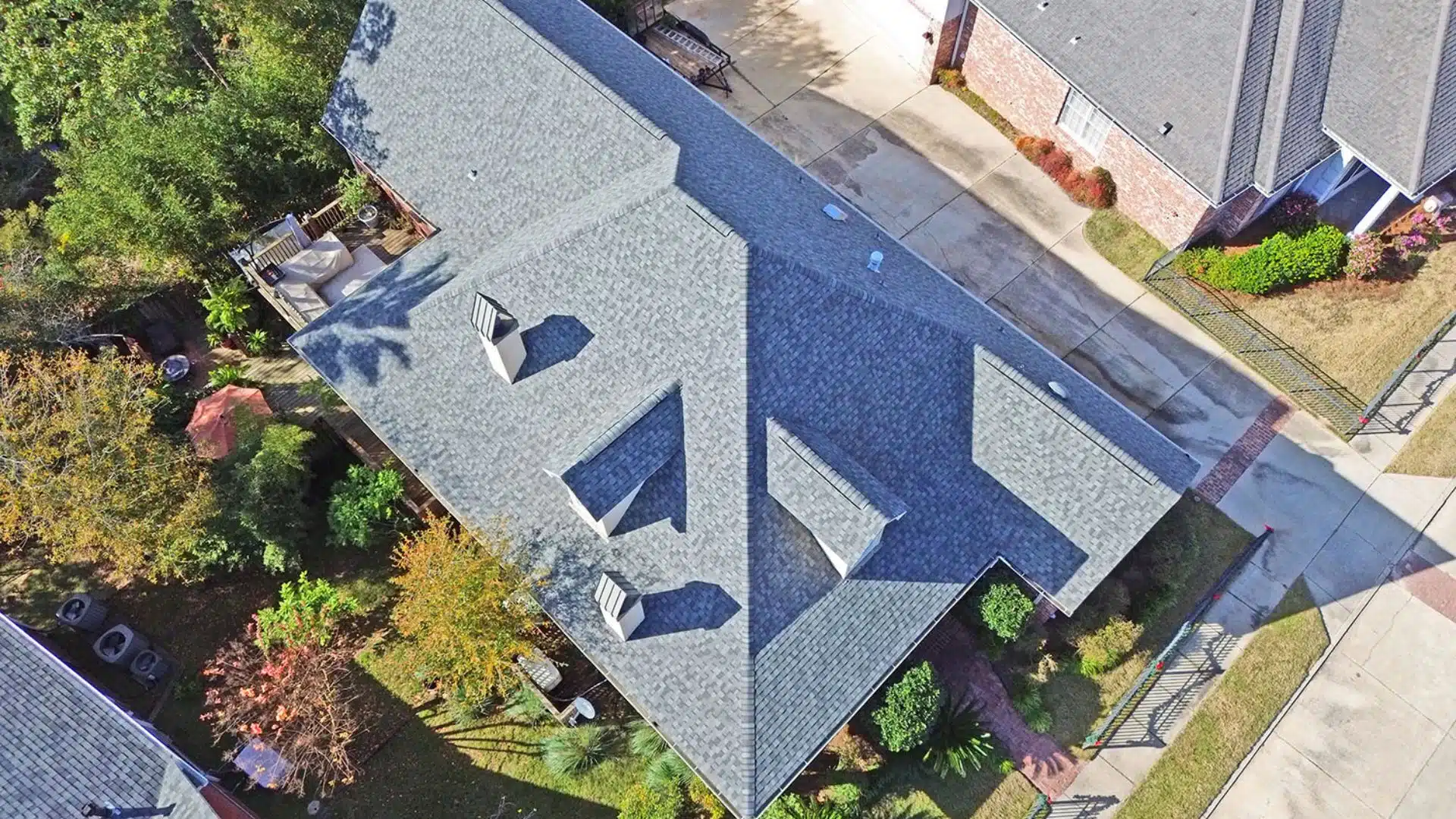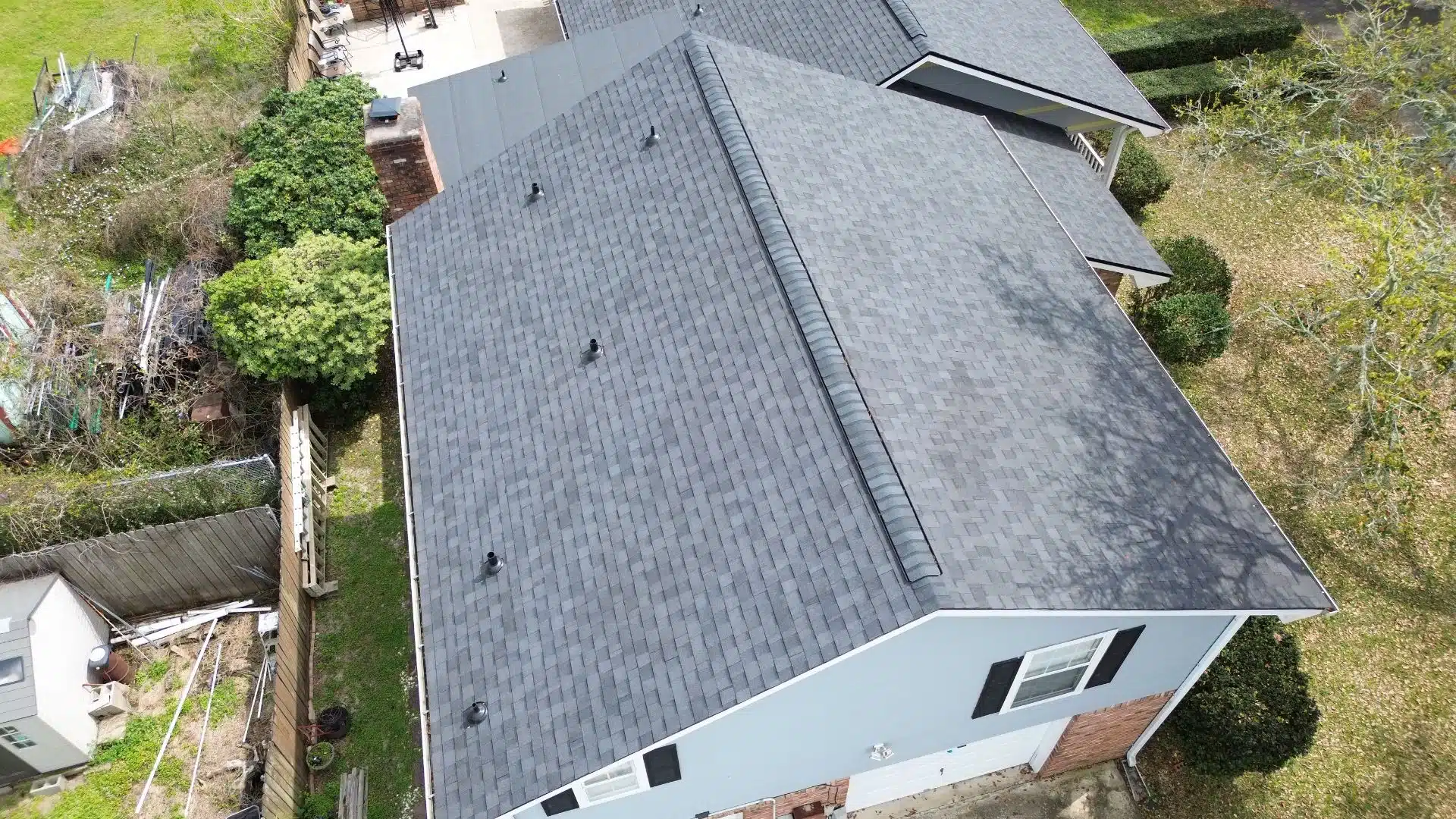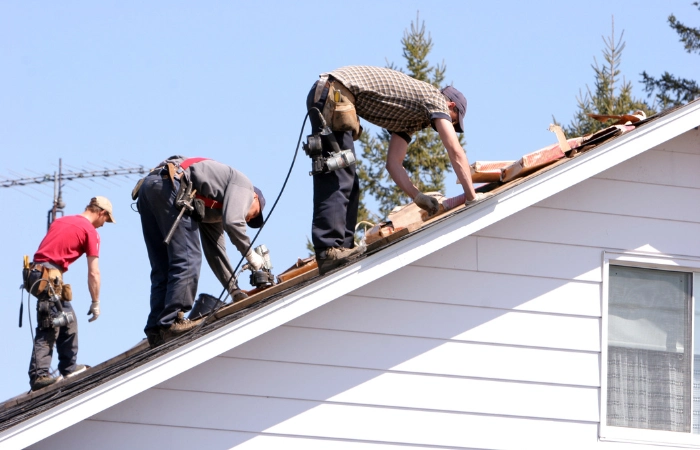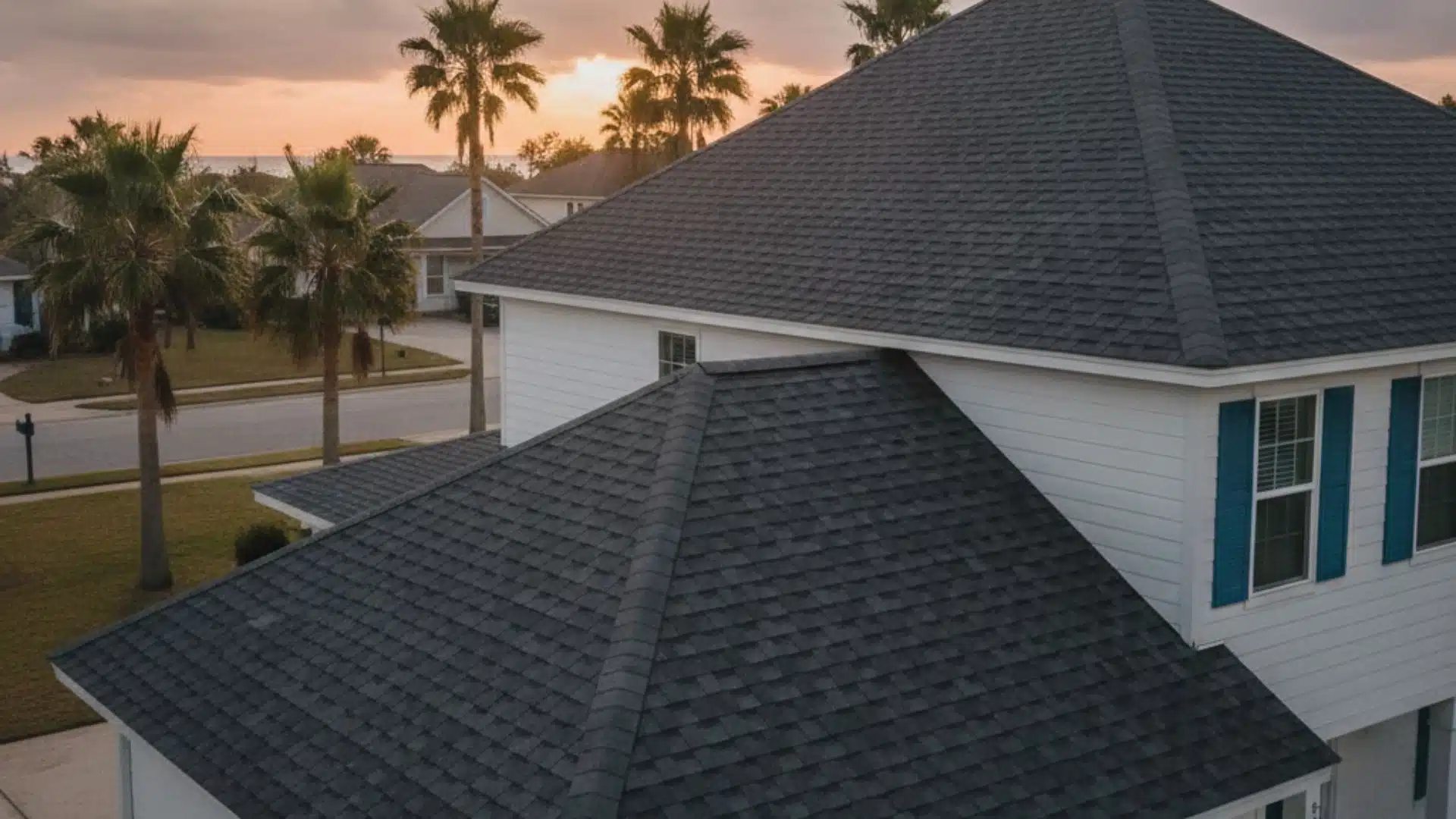When it comes to protecting your home from the relentless forces of nature, especially in areas prone to severe weather like hurricanes, hailstorms, and high winds, having a sturdy roof is essential. A fortified roof goes beyond the standard roof construction, offering enhanced protection that helps safeguard your home and loved ones during extreme conditions. While it may cost more upfront, the long-term benefits far outweigh the initial investment, providing peace of mind and potentially saving you from the high costs of repairs after a storm.
In this blog, we will dive into what is the average cost of a fortified roof, breaking down the price factors that influence the final price tag. From materials to labor costs and real-world examples, we’ll provide a comprehensive look at what you can expect to pay for this level of home protection.
What is a Fortified Roof?
A fortified roof is a specially designed roofing system constructed to withstand severe weather conditions like hurricanes, tornadoes, and extreme wind speeds. It differs significantly from a standard roof in terms of materials, design, and installation techniques. The goal of a fortified roof is to provide superior protection for your home, minimizing the risk of damage from the elements.
Key Features:
- Materials: Fortified roofs often use high-impact resistant shingles, metal roofing, or other specially designed materials that are more durable and resilient than standard asphalt shingles or traditional roofing options.
- Construction & Reinforcement: The structure is reinforced with additional support systems, such as stronger roof decks, hurricane straps, and additional layers of protection. This helps the roof maintain its integrity even during high winds and heavy storms.
- Certification Standards: To be considered “fortified,” the roof must meet strict certification standards set by organizations such as the Insurance Institute for Business & Home Safety (IBHS). This means passing rigorous tests to ensure the roof can withstand high winds, flying debris, and other extreme conditions that may occur during storms.
Additional Steps in Fortifying a Roof:
- Enhanced Installation Techniques: Installing a fortified roof involves more than just laying down shingles. The roofing process includes specific techniques to enhance the durability and wind resistance, such as double or triple-layered underlayment, sealed roof decks, and reinforced trusses. This is why you need a roofing contractor in the MS Gulf Coast.
- Roof Deck Preparation: In many cases, the roof deck itself must be upgraded to support the new materials and reinforcement techniques. This can involve removing old materials, cleaning the surface, and ensuring the deck is structurally sound before installation begins.
These extra steps ensure that your fortified roof provides maximum protection, helping to prevent costly damage from severe weather while offering peace of mind that your home is well-prepared for whatever nature throws its way.
Typical Price Range for a Fortified Roof
When considering a fortified roof for your home, the cost can vary depending on the size of the roof, the materials used, and the complexity of the installation. Below is an estimate of what you can expect to pay for a fortified roof:
- Basic Fortified Roof: For an average-sized home (around 2,000 sq ft), the cost typically ranges from $10,000 to $18,000. This includes the necessary materials, labor, and additional steps required to meet certification standards for fortification. The price may vary depending on your location and the specific requirements for fortification in your area.
- Premium Fortified Roof: If you’re looking for enhanced protection with premium materials, the cost for a fortified roof can range from $15,000 to $25,000. This price range generally includes top-tier materials like high-quality impact-resistant shingles or metal panels, along with more advanced installation techniques to ensure the roof can withstand extreme weather conditions.
These price estimates cover materials, labor, and the additional steps for certification required to meet the rigorous standards for fortified roofing. While the initial cost may seem high, it’s important to consider the long-term value, including potential insurance savings and reduced risk of storm damage.
Cost Breakdown
A closer look at the individual components that make up the cost of a fortified roof helps to understand why the price can be higher than a standard roof installation. Below is a breakdown of the key cost factors:
- Material Costs: The materials used in a fortified roof are more durable and impact-resistant than standard roofing options, and this is one of the primary reasons for the increased cost.
- Impact-Resistant Shingles: These shingles are designed to withstand higher winds and flying debris. The cost for impact-resistant shingles typically ranges from $300 to $500 per square (100 sq ft).
- Metal Panels: Metal roofing offers exceptional durability and wind resistance, making it a popular choice for fortified roofs. The cost for metal roofing ranges from $600 to $1,200 per square (100 sq ft), depending on the type of metal used and the design.
- Impact-Resistant Shingles: These shingles are designed to withstand higher winds and flying debris. The cost for impact-resistant shingles typically ranges from $300 to $500 per square (100 sq ft).
- Labor Costs: The labor involved in installing a fortified roof is more specialized due to the need for additional reinforcement, specialized installation techniques, and meeting certification standards. Labor costs generally range from $150 to $300 per square (100 sq ft). This higher labor rate is reflective of the skilled labor needed to install these reinforced roofs.
- Preparation and Upgrades: Before the new roof can be installed, the existing materials often need to be removed, and the roof deck may need to be upgraded to ensure it can support the additional weight and materials. Preparation and upgrades typically add $500 to $1,500 to the overall cost of the project.
In general, a fortified roof is typically 1–3% more expensive than a standard roof. This translates to an additional $1,000 to $5,700 for a typical 2,000 sq ft home, depending on the materials and complexity of the installation.
Although the upfront cost is higher, the increased durability and protection provided by a fortified roof can offer long-term savings, such as reduced storm damage repair costs and potential insurance discounts.
Real-World Examples

To better understand how the costs of a fortified roof play out in actual scenarios, here are two examples from cities that often experience severe weather conditions:
- Gulfport, MS: A homeowner with a 2,600 sq ft steep-pitched roof in Gulfport MS initially paid $21,000 for a standard roof installation. However, they chose to add a fortified roof upgrade for additional protection, which cost $5,000 more. The total cost for the fortified roof installation came to $26,000. This example shows that while the upfront cost of fortification is higher, the added protection in a hurricane-prone area like Gulfport MS is invaluable.
- Ocean Springs, MS: For a 2,000 sq ft home in Ocean Springs MS, the cost to upgrade to a fortified roof is typically an additional $1,000 to $3,000 on top of the standard roof price. For instance, a homeowner paid $19,000 for a standard roof, and after fortifying it, the price increased by $2,500, bringing the total to $21,500. This example demonstrates that the cost difference for fortifying a roof is relatively modest, yet it provides substantial value in terms of storm protection.
These real-world examples help illustrate how the costs of a fortified roof in MS Gulf Coast can vary depending on the home’s size, pitch, and location. However, the additional investment is a smart choice for homeowners seeking enhanced protection against severe weather.
Long-Term Value and Incentives
While the initial cost of a fortified roof may be higher, the long-term benefits can make it a worthwhile investment. Homeowners who choose to install a fortified roof can take advantage of several potential savings and financial incentives:
- Insurance Discounts: Homeowners with fortified roofs often qualify for insurance premium discounts. These discounts can range from 16% to 52%, depending on the insurer and location. Since fortified roofs are built to withstand high winds and severe weather, insurance companies typically offer lower rates for homes that are better protected. Over time, these savings can significantly offset the higher upfront costs of installing a fortified roof.
- Grants and Financial Incentives: Some states, including Louisiana, offer grants to help homeowners cover the cost of upgrading to a fortified roof. For example, Louisiana’s $10,000 grant program helps eligible homeowners with the financial burden of fortification. Such programs make it more affordable for homeowners to protect their properties from severe weather events without sacrificing quality.
- Increased Home Value: Installing a fortified roof not only protects your home but also adds value to it. Homes with fortified roofs can see an increase in resale value by up to 7%. This increase is especially valuable in storm-prone areas, where buyers are looking for homes with added protection. The peace of mind that comes with a fortified roof makes your home more appealing to prospective buyers, potentially giving you a higher return on investment when it’s time to sell.
These long-term advantages—insurance discounts, grants, and increased home value—can make the upfront cost of a fortified roof more manageable and even profitable over time. By choosing to fortify your roof, you’re investing not only in your home’s safety but also in its financial future.
Summary Table
To help you easily compare the costs of standard roofs and fortified roofs, here’s a summary table that highlights the key price differences and what each roofing option includes:
| Roof Type | Average Cost (2,000 sq ft) | Additional Cost vs. Standard | Notes |
| Standard Asphalt Shingle | $5,500 – $16,000 | — | Most common material, cost-effective option |
| Basic Fortified Roof | $10,000 – $18,000 | $1,000 – $5,700+ | Enhanced materials, reinforced installation |
| Premium Fortified Roof | $15,000 – $25,000 | $3,000 – $9,000+ | Best materials, highest protection level |
This table provides a clear comparison of the costs associated with each type of roof. The basic fortified roof offers solid protection, while the premium fortified roof uses higher-end materials for the ultimate in storm defense. The standard asphalt shingle roof, although more affordable, doesn’t provide the same level of security against severe weather.
Conclusion
When deciding whether a fortified roof is right for your home, it’s important to consider both the upfront cost and the long-term benefits. While the initial investment for a fortified roof can be higher than a standard roof—ranging from $10,000 to $25,000, depending on the type of fortification and materials—you’re investing in far more than just a roof. You’re securing peace of mind, protection from extreme weather, and potential long-term savings.Here at Integrity Roofing, we can help you in this descision.
Insurance discounts, grants, and the increase in home value all make the cost of a fortified roof more manageable over time. By reducing the risk of storm damage, you’re also potentially lowering future repair costs and increasing the resale value of your home.
When considering whether the higher initial cost is worth it, think about the protection benefits a fortified roof provides, especially in areas prone to hurricanes, tornadoes, and high winds. Over time, the investment will likely pay off through savings on insurance and increased property value, not to mention the added confidence that your home is better equipped to handle whatever nature throws its way.
Frequently Asked Questions (FAQ)
- What is the difference between a standard roof and a fortified roof?
A standard roof typically uses basic materials like asphalt shingles and provides basic protection. A fortified roof, on the other hand, uses enhanced materials (like impact-resistant shingles or metal panels), additional installation techniques, and certification to withstand extreme weather, such as high winds and hurricanes. - How much more expensive is a fortified roof compared to a standard roof?
A fortified roof is generally 1-3% more expensive than a standard roof. For an average-sized home (around 2,000 sq ft), the cost of a basic fortified roof ranges from $10,000 to $18,000, while a premium fortified roof can cost $15,000 to $25,000, depending on materials and complexity. - Are there any financial incentives for installing a fortified roof?
Yes, some states offer grants to help with the cost of upgrading to a fortified roof. For example, Louisiana offers up to $10,000 in grants. Additionally, homeowners may qualify for insurance discounts ranging from 16% to 52% depending on the insurer and region. - How long does it take to install a fortified roof?
The installation of a fortified roof typically takes several days to a few weeks, depending on the size and complexity of the roof, weather conditions, and the type of fortification being added. The installation process involves specialized techniques and additional preparation, so it may take longer than a standard roof installation.
Will a fortified roof increase the value of my home?
Yes, installing a fortified roof can increase your home’s resale value by up to 7%. Potential buyers in storm-prone areas are often willing to pay a premium for homes that offer enhanced protection, making it a smart investment in your property’s long-term value.




